The latest generation StorageReview Intel Test Rigs are meant to represent current and realistic consumer PC platforms. These test rigs allow us to reliably benchmark consumer storage gear, obtaining performance results similar to that of our readers. To accomplish this, we have built mid-range and higher-end rigs that are ideal for our tests as they use quality and reliable parts with a host of features and compatibility so that we can properly and efficiently benchmark any storage device thrown at us.
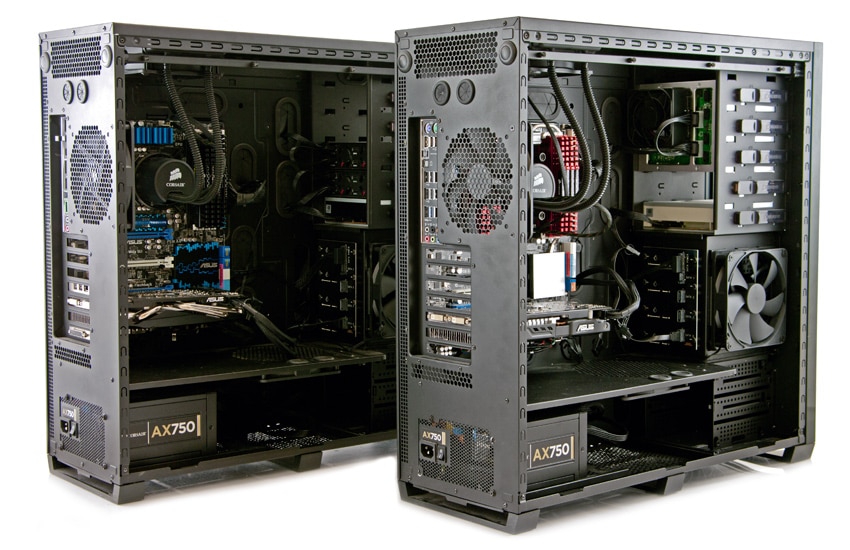
Our mid-range rig is based around the ASUS P8Z77-V Premium motherboard, which is equipped with the Intel i5-3470 processor. For our upper-tier testing rig, we are also using an ASUS motherboard, the P9X79 WS, with the Intel Core i7 3960X processor. Both rigs are specifically created to work with newer SATA 6.0GB/s hard drives and SSDs, which are quickly becoming the market norm. Additionally, our setups take advantage of PCIe 3.0’s efficient use of bandwidth per card/slot, as it has twice the bandwidth capacity of PCIe 2.0. Though you may not see GPUs that can take full advantage of that amount of bandwidth for a while longer, it will make a difference in our StorageReview lab.
Here’s a look at the full spec sheet for our Intel Test Rigs:
Storage Review Intel Mid-Range Test Rig Specifications:
- Windows 7 Professional SP1 64-Bit
- ASUS P8Z77-V PREMIUM Motherboard
- Intel i5-3470 (6M Cache, 2.8 GHz)
- Corsair Hydro Series H50 CPU Cooler
- 16GB Corsair Vengeance (4x4GB)
- ASUS NVIDIA GTX 460 1GB Graphics Card
- Corsair Force GT 90GB SSD (Boot Drive)
- Corsair Professional Series Gold AX750 Power Supply
- Corsair Obsidian Series 800D Full-Tower Case
Storage Review Intel High-End Test Rig Specifications:
- Windows 7 Professional SP1 64-Bit
- Intel Core i7 3960X
- Corsair Hydro Series H50 CPU Cooler
- 64GB corsair vengeance 8x8GB
- ASUS P9X79 WS motherboard
- Corsair Force GT 90GB SSD
- ASUS GTX560 Ti graphics
- Corsair Professional Series Gold AX750 Power Supply
- Corsair Obsidian Series 800D Full-Tower Case
Motherboard
Our mid-range rig is an Intel Z77-based motherboard, the ASUS P8Z77-V Premium . This ASUS motherboard is another step in the right direction, as it is the first to carry Intel integrated Thunderbolt in addition to a number of handy features such as supporting up to four PCIe 3.0 expansion slots (dual CPU) and two PCIe 2.0 slots (single CPU) the ASUS Wifi module, Thunderbolt port, Bluetooth, USB 3.0, and dual gigabit LAN.
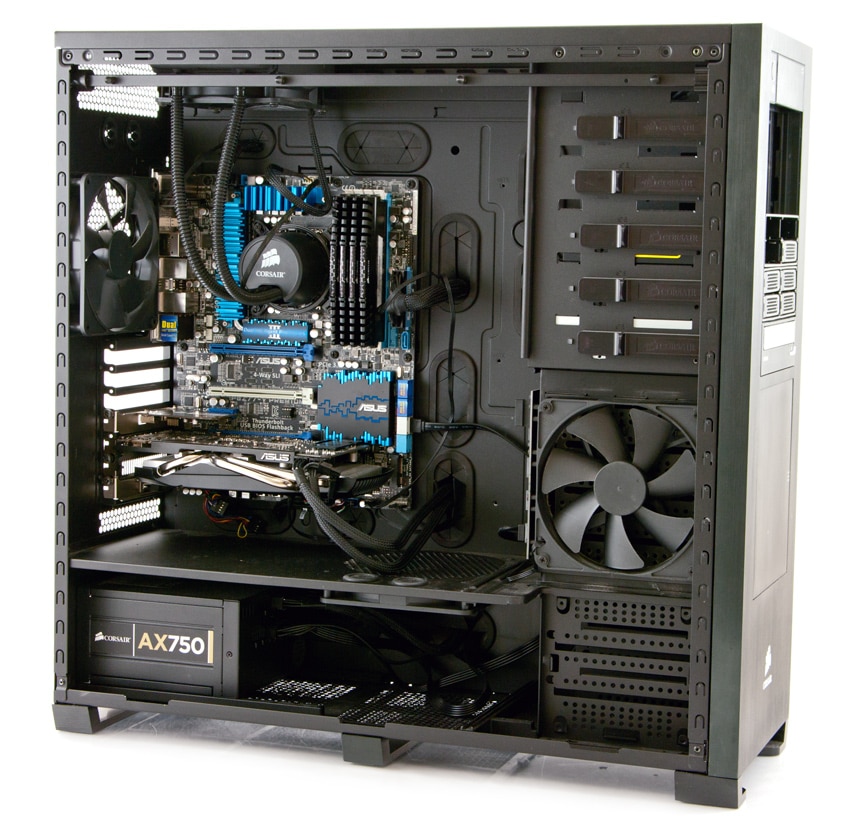
ASUS P8Z77-V Premium Specifications:
- CPU: Intel Socket 1155 for 3rd/2nd Generation Core i7/Core i5/Core i3/Pentium/Celeron Processors
- Chipset: Intel Z77
- Memory: 4 x DIMM, Max. 32GB, DDR3 1600/1333/1066 MHz
- Thunderbolt: VGA output support, 10 GB/s data transfer, Daisy-chain up to 6 Thunderbolt devices
- Graphics: Integrated Graphics Processor
- Multi-VGA output support : HDMI/DisplayPort/Thunderbolt ports
- Supports HDMI with max. resolution 1920 x 1200 @ 60 Hz
- Supports DisplayPort with max. resolution 2560 x 1600 @ 60 Hz
- Supports Thunderbolt with max. resolution 2560 x 1600 @ 60 Hz
- Expansion Slots:
- 4 x PCIe 3.0/2.0 x16 (dual x16 or x16, x8, x8 or quad x8)
- 2 x PCIe 2.0 x1
- Storage: Intel Z77 chipset :
- 2 x SATA 6Gb/s port(s), gray
- 3 x SATA 3Gb/s port(s), blue
- 1 x mini-SATA 3Gb/s port(s) with onboard 32GB SSD, black
- Support Raid 0, 1, 5, 10
- Supports Intel Smart Response Technology, Intel Rapid Start Technology, Intel Smart Connect Technology
- LAN: Intel 82579V, 1 x Gigabit LAN Controller(s), Intel 82583, 1 x Gigabit LAN Controller(s)
- Wireless Data Network: Wi-Fi 802.11 a/b/g/n
- Bluetooth: Bluetooth V4.0, Bluetooth V3.0+HS
As you can see, this is model is incredibly feature-rich Intel Z77 chipset motherboard and is especially useful for if you are a multi PCIe device user with its 4 x PCIe 3.0/2.0 x16 (dual x16 or x16, x8, x8 or quad x8) and 2 x PCIe 2.0 x1 expansion slots.
Another useful feature on this motherboard is its two SATA 6Gb/s connectors (plus three 3GB/s connectors) and the addition of the advanced SSD Caching II. The former allows users to cache additional commonly used programs and files using multiple SSDs to instantly upgrade system performance. It also comes equipped with a 32GB mSATA-based SSD, enabling Intel Smart Response and Rapid Start Technology for speedy boot up and resume. The ASUS P8Z77-V Premium represents the all-in-one, top of the line solution, which is perfect for our testing rig because StorageReview reviews a plethora of different devices and no other Z77 motherboard on the market offers such a package.
Our high-end platform features an Intel X79-based motherboard, the ASUS P9X79 WS, which is designed for ultimate reliability and server-level compatibility with a wide selection of RAID and LAN cards. The ASUS P9X79 WS has up to four PCI-Express 3.0/2.0 expansion slots (two with x4 mode, two with dual CPU). Additionally, the P9X79 WS is equipped with two Intel server-class Gigabit LAN ports that help lower network CPU usage by up to 71%. Additionally, with features such as SSD Caching, USB boost and BIOS flashback, the P9X79 and its Quad-SLI and Quad Channel Memory capability, this high-performance motherboard sees constant benchmarking on new drives we are reviewing.
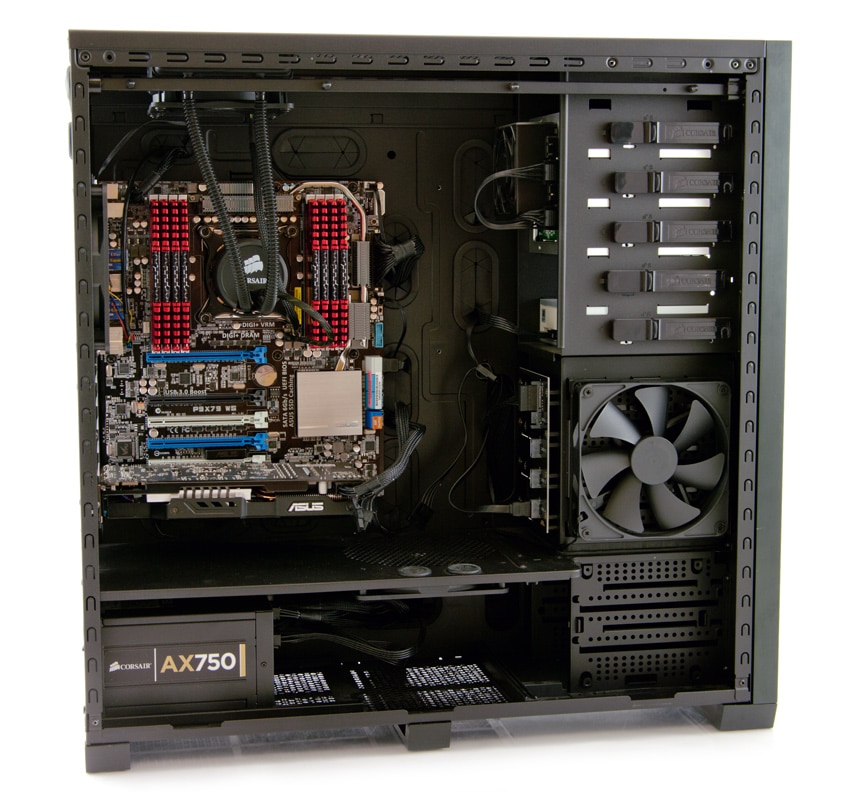
ASUS P9X79 WS Specifications:
- CPU: Intel Socket 2011 for 2nd Generation Core i7 Processors, Intel Xeon series processors
- Supports Intel Turbo Boost Technology 2
- Chipset: Intel X79
- Memory: 8 x DIMM, Max. 64GB, DDR3 1866/1600/1333/1066 MHz ECC, Non-ECC, Un-buffered
- Quad Channel Memory Architecture
- Supports Intel Extreme Memory Profile (XMP)
- Multi-GPU Support:
- Supports NVIDIA 4-Way SLI Technology
- Supports AMD Quad-GPU CrossFireX Technology
- Expansion Slots:
- 2 x PCIe 3.0/2.0 x16 (dual x16, triple x16/8/8, quad x8, black+blue)
- 2 x PCIe 3.0/2.0 x16 (x4 mode, white)
- Storage:
- Intel X79 chipset
- 2 x SATA 6Gb/s ports
- 4 x SATA 3Gb/s ports
- Support Raid 0, 1, 5, 10:
- Marvell PCIe 9128 controller
- 2 x SATA 6Gb/s ports
- Intel X79 chipset
- Networking
- Intel 82579V, 1 x Gigabit LAN Controller(s)
- Intel 82574L, 1 x Gigabit LAN Controller(s)
As shown in the specs above, there are no legacy PCI slots present on the board, only using 3.0/2.0 PCI-E 16x, which is normal for a higher end rig. Additionally, like the ASUS P8Z77-V PREMIUM, the P9X79 motherboard features two SATA 6GB/s connectors (plus four 3GB/s connectors) and advanced SSD Caching II.
The P8Z77-V and P9X79 have a Dual Channel Memory Architecture and Architecture respectively and both support Intel’s Extreme Memory Profile (XMP).
Hardware Components
For our Mid-Range setup’s processor, we opted for the Intel i5-3470 so that it wasn’t greatly surpassing what most of our readers would have in their own home, as the i5-3470 is an attractive upper mid-range processor for users looking to build a decent system without going broke.
Intel i5-3470 Specifications:
- # of Cores: 4
- # of Threads: 4
- Clock Speed: 3.2 GHz
- Max Turbo Frequency: 3.6 GHz
- Intel® Smart Cache: 6 MB
- Bus/Core Ratio: 32
- DMI: 5 GT/s
- Instruction Set: 64-bit
- Instruction Set Extensions: SSE4.1/4.2, AVX
- Embedded Options Available: No
- Lithography: 22 nm
- Max TDP: 77 W
- Max Memory Size (dependent on memory type): 32 GB
- Memory Types: DDR3-1333/1600
- # of Memory Channels: 2
- Max Memory Bandwidth: 25.6 GB/s
- ECC Memory Supported: No
The Intel Core i5-3470 is a mainstream Ivy Bridge CPU that delivers solid performance featuring Intel Turbo Boost 2.0 and Intel Hyper-Threading Technology, which dynamically increases the processor’s frequency and delivers two processing threads per physical core (completing tasks sooner) respectively.
We designed our High-End Platform for our readers with desktops in the upper-tier performance range and chose the Intel Core i7 3960X processor to obtain benchmarking results for these kinds of platform setups. This 3.3GHz (Up To 3.9GHz w/ Turbo) processor also has Turbo Boost and Hyper threading technology, and supports 4 channels of DDR3-1600 memory with 1 DIMM per channel.
Intel Core i7 3960X Specifications:
- # of Cores: 6
- # of Threads: 12
- Clock Speed: 3.3 GHz
- Max Turbo Frequency: 3.9 GHz
- Intel® Smart Cache: 15 MB
- Bus/Core Ratio: 33
- DMI: 5 GT/s
- Instruction Set: 64-bit
- Max Memory Size (dependent on memory type): 64 GB
- Memory Types: DDR3-1066/1333/1600
- # of Memory Channels: 4
- Max Memory Bandwidth: 51.2 GB/s
- ECC Memory Supported: No
As the specifications show, it’s clearly one the fastest processors money can buy and improves on overclocking abilities compared to its predecessors. With its increased amount of PCI Express lanes and a faster SATA interface, this makes a great choice for our high-end set up.
Cooling is extremely important to any modern computer, especially systems running 24/7 in a testing environment. The Corsair H50 is a smart choice for several reasons. For starters it features a copper base; copper is one of the best materials for conducting heat. The H50 is a closed-loop water-cooling system with an integrated pump which eliminates points of failure that could cause trouble down the road. Heat is extracted from the water using a 120mm fan and radiator and ejected from the top of our Corsair 800D case.
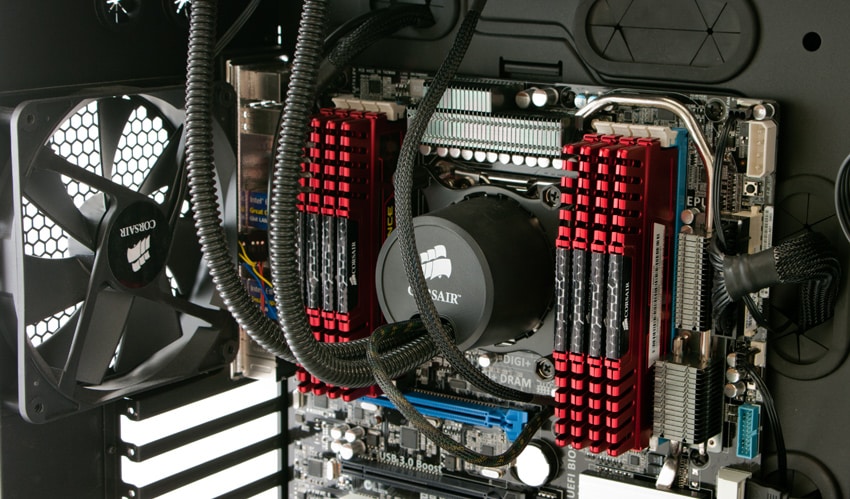
The Corsair Vengeance series memory uses high-quality chips with carefully selected RAMs and features aluminum heat spreaders to cope with the extra heat from overclocking – which is something this memory kit is designed to do. All initial Vengeance memory modules have a low 1.5V supply voltage for maximum compatibility and energy efficiency.
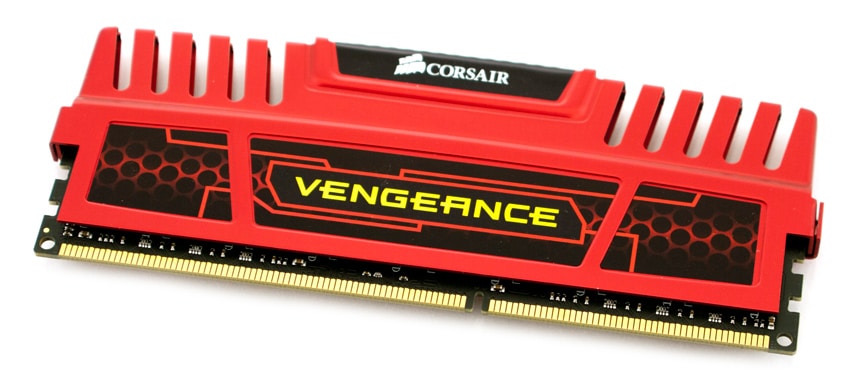
- Performance Profile: XMP
- Heat Spreader: Vengeance
- Memory Configuration: Dual Channel
- Memory Type: DDR3
- Package – Memory Pin: 240
- Package – Memory Format: DIMM
- Tested Voltage: 1.65
- SPD Voltage: 1.5
- Speed Rating: PC3-19200 (2400MHz)
- SPD Speed: 1333MHz
- Tested Speed: 2400Mhz
- Tested Latency: 9-11-11-31
- SPD Latency: 9-9-9-24
For our mid-level platform, we chose the 16GB Corsair Vengeance (4×4 16GB) and the 64GB corsair vengeance (8x8GB) for our high-end machine.
We chose the Asus GTX graphic card line for our testing rigs; the GTX 460 and GTX560 Ti.
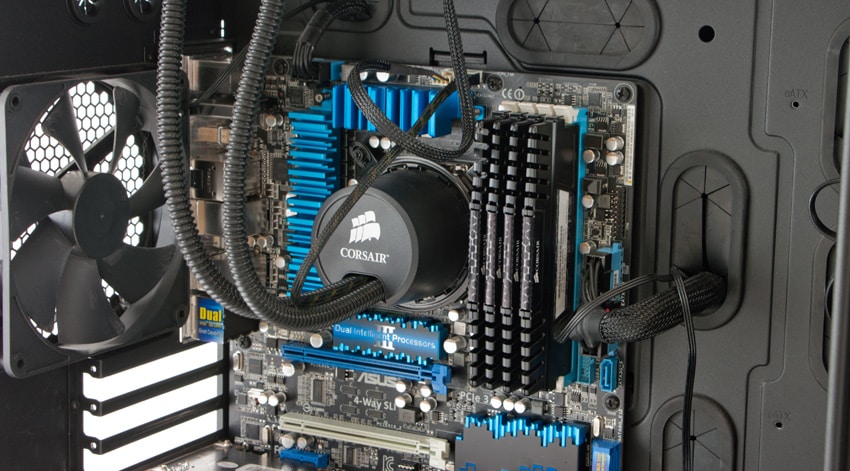
Our mid-range platform uses the ASUS GTX 460, which is able to handle nearly all modern games on high settings thanks to its 336 stream processors and 1GB of dedicated video RAM. We’re not using it for testing games, but the point is having a powerful graphics card eliminates the possibility of this becoming a performance bottleneck.
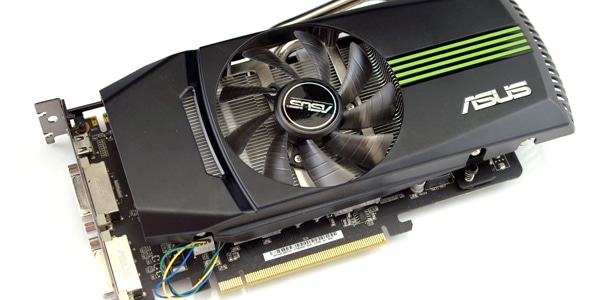
- Bus Standard: PCI Express 2.0
- Video Memory: GDDR5 1GB
- Engine Clock: 675 MHz
- Shader Clock: 1350 MHz
- Memory Clock: 3600 MHz ( 900 MHz GDDR5 )
- RAMDAC: 400 MHz
- Memory Interface: 256-bit
- Resolution: D-Sub Max Resolution : 2048×1536
- DVI Max Resolution : 2560×1600
- Interface: D-Sub Output : Yes x 1 (via DVI to D-Sub adaptor x 1)
- DVI Output : Yes x 2 (DVI-I)
- HDMI Output : Yes x 1 (via DVI to HDMI adaptor x 1 )
- HDCP Support: Yes
The ASUS GTX560 Ti on our high-end rig offers good performance and can handle all the latest titles extremely well thanks to its 320 bit GDDR5 and 1280MB of dedicated video RAM.
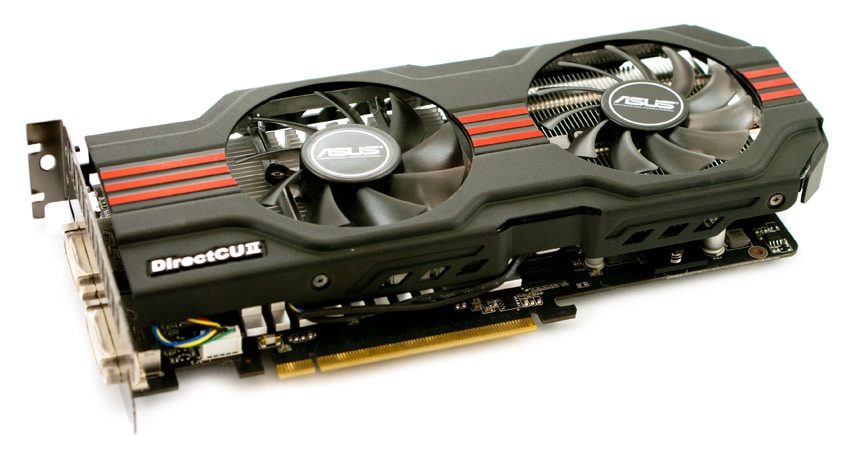
- Bus Standard: PCI Express 2.0
- Video Memory: GDDR5 1GB
- Engine Clock: 900 MHz
- CUDA Core: 384
- Shader Clock: 1800 MHz
- Memory Clock: 4200 MHz ( 1050 MHz GDDR5 )
- RAMDAC: 400 MHz
- Memory Interface: 256-bit
- Resolution: D-Sub Max Resolution : 2048×1536
- DVI Max Resolution : 2560×1600
- Interface: D-Sub Output : Yes x 1 (via DVI to D-Sub adaptor x 1)
- DVI Output: Yes x 2 (DVI-I)
- HDMI Output: Yes x 1 (via Mini HDMI to HDMI adaptor x 1)
- HDCP Support: Yes
The Corsair Force GT 90GB SSD has proven itself to be a reliable and fast performing SSD through testing over the last year. For those two reasons it earned a spot in both our Intel Test Rigs. The blazing fast Corsair SSD uses a SATA 3 6GB/s interface with Asynchronous NAND, which fits perfectly with our testing rig setups.
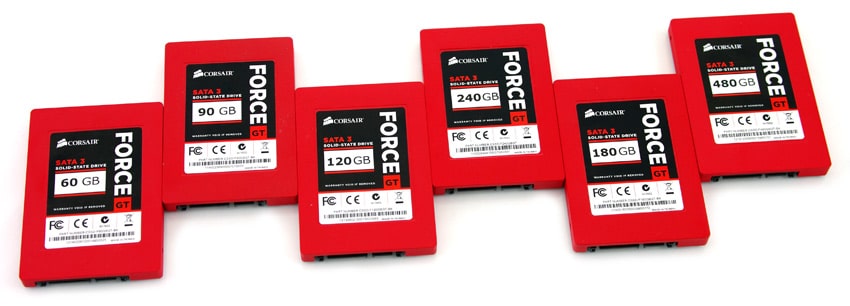
Here’s the full spec sheet:
- SSD Unformatted Capacity: 90 GB
- Max Sequential R/W (ATTO): 555 MB/s sequential read — 505 MB/s sequential write
- Max Random 4k Write (IOMeter 08): 85k IOPS (4k aligned)
- Interface: SATA 6Gb/s
- Form Factor: 2.5 inch
- DRAM Cache Memory: No
- Weight: 80g
- Voltage: 5V ±5%
- Power Consumption (active): 2.5W Max
- Power Consumption (idle/standby/sleep): 0.6W Max
- S.M.A.R.T. Support: Yes
- Shock: 1500 G
- MTBF: 2,000,000 hours
The power supply is the second most important component of any computer below the motherboard; it has to regulate power and cope with constantly changing power demands. For this again we turned to Corsair and its excellent line of power supplies. The AX750 features a modular design so there’s not a mess of cables hanging off the back. The AX750 is one of the most efficient power supplies on the market, delivering 90%+ efficiency at 50% power draw.
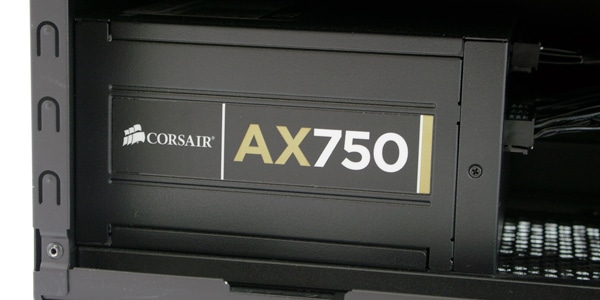
- Dimension: 150mm(W) x 86mm(H) x 160mm(L)
- Modular: Fully
- Power: 750 Watts
- 80 Plus: Gold
- ATX Connector: 1
- EPS Connector: 2
- PCI-E Connector: 4
- 4 Pin Peripheral Connector: 8
- SATA Connector: 12
- MTBF: 100,000 hours
Design and Build
For both our builds, we platforms for one of the largest desktop towers we could get our hands on. The Corsair 800D features a steel structure and measures 24″ x 24″ x 9″. There are three isolated cooling zones with three large 140mm fans; it supports up to three more 120mm fans. One of the most important features for us was the four 3.5-inch hot-swappable storage bays. The case includes a total of five 5.25-inch expansion bays, two hidden 3.5-inch hard drive bays, and plenty of space to swap storage components around in on a daily basis.
We will be using the Icy Dock MB994SP-4S for our storage back up, which holds up to four 2.5″ hard drives or SSDs and occupies a 5.25″ slot in our desktop. It has an all-metal construction with slide-out drives. We use these storage bays when working with SSD RAID arrays.
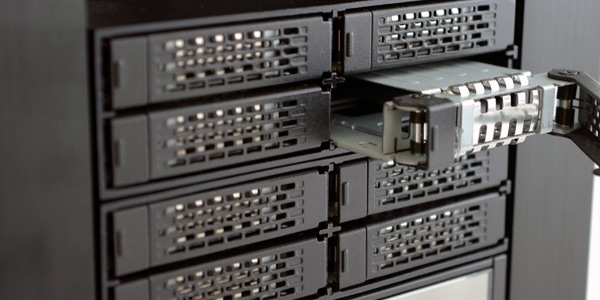
We have chosen the LSI MegaRAID 9260-8i for all of our RAID testing. It has a fast onboard PowerPC processor and lots of cache with hardware RAID support as well as eight SAS/SATA III 6.0Gb/s connections.
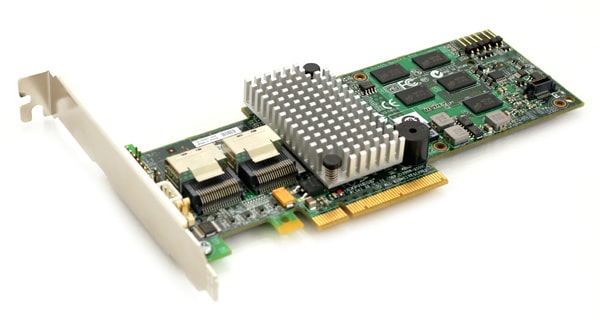
- LSI 800MHz SAS2108 RAID-on-Chip (ROC)
- Two x4 internal SFF8087 Mini-SAS connectors
- 6Gb/s throughput per port
- 512MB DDR2 cache (800MHz)
- RAID levels 0, 1, 5 and 6
- RAID spans 10, 50 and 60
- Performance
- Maximum reads: 2,875MB/s
- Maximum writes: 1,850MB/s
Our desktop obviously does not have an internal battery; instead we hooked it up to a backup power supply unit, the APC Back-UPS Pro 700, which has sufficient power from its internal 12V SLA battery to keep our desktop running in the event of a power failure. It kicks in immediately if the power goes out to help us safely save our project files and shutdown the system.
The monitor doesn’t affect performance, of course, but it is a required component of any computer. The L220X places function over form. It has an anti-glare screen surface and a high resolution of 1920×1200 pixels, which is even higher than the 1080p monitors being sold today (only 1920×1080 pixels).
Conclusion
Overall, our Intel Test Rigs are designed with two goals in mind: reliability and performance. Reliability comes first; since we are performing product testing on this platform, we need to have predictable and reliable performance each and every time we run a test. As configured, our test computer allows us to do exactly that. They also mimic current PC platforms that consumers either make on their own, or otherwise serve as a proxy for what the big brands sell. In either event these machines accomplish the goal of providing a modern and reliable way for us to test the latest generation of consumer SSDs, hard drives and external storage solutions.




 Amazon
Amazon